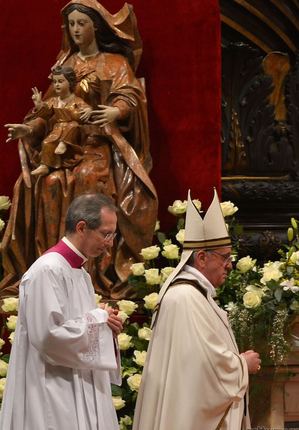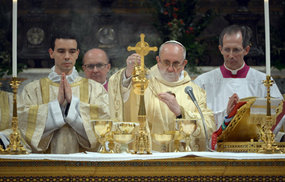It is true that women have had a better sense in recognizing the risen Jesus than men: “the women were the first witnesses” of Jesus’ resurrected existence. The teaching of the resurrection from the dead of Jesus and our own future resurrection is undeniably hard teaching to grasp. Yesterday, we heard in the account of the Marys at the tomb. One of the Marys, that of Magdala, is known as the Apostle to the Apostles. Below are three paragraphs on the subject from today’s Wednesday General Audience of Pope Francis. I am sure some will raise the issue that the Pope is not going far enough by denying the ministerial priesthood to women. Of course, we are not talking about ministerial priesthood here; the Pope’s point here is to draw our attention that God’s ways, God’s criteria in selecting those who called to serve Him is not same as human ways of judging AND the identification and verification of the Lord’s truth as the Son of God, alive and present to each of us. As Francis says, “In our journey of faith it is important to know and feel that God loves us, do not be afraid to love: faith is professed with the mouth and heart, with the word and love.”
I would like to dwell the second, on testimony in the form of the accounts that we find in the Gospels. First, we note that the first witnesses to this event were the women. At dawn, they go to the tomb to anoint the body of Jesus, and find the first sign: the empty tomb (Mk 16:1). This is followed by an encounter with a Messenger of God who proclaims: Jesus of Nazareth, the Crucified One, he is not here, he is risen (cf. vv. 5-6). The women are driven by love and know how to accept this proclamation with faith: they believe, and immediately transmit it, they do not keep it for themselves. They cannot contain the joy of knowing that Jesus is alive, the hope that fills their heart. This should also be the same in our lives. Let us feel the joy of being Christian! We believe in the Risen One who has conquered evil and death! Let us also have the courage to “go out” to bring this joy and light to all the places of our lives! The Resurrection of Christ is our greatest certainty, it is our most precious treasure! How can we not share this treasure, this beautiful certainty with others! It’s not just for us it’s to be transmitted, shared with others this is our testimony!








